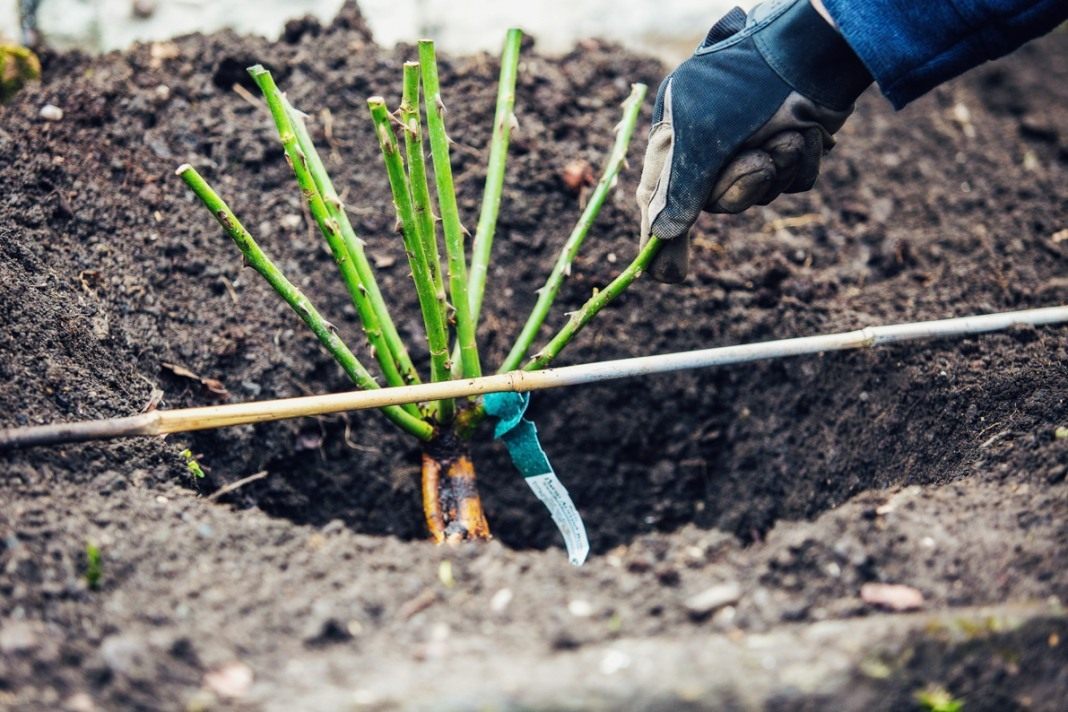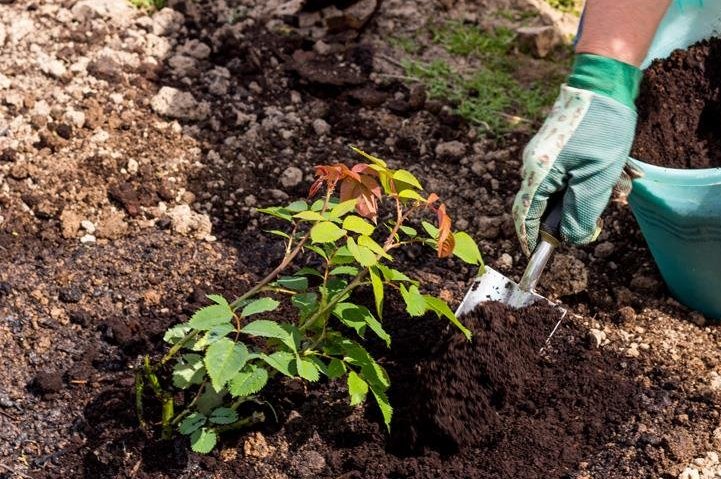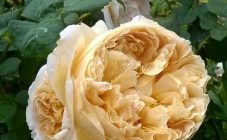Roses are amazingly beautiful shrubs from the Rosaceae family. On personal plots in the middle lane, many species, varieties and garden forms are cultivated. A special group is made up of the flowers of David Austin, the famous English breeder. Bright to present this series - Rose Princess Margaret.
Austin roses
David Austin specialized in the creation of rose varieties. The idea came to him in the middle of the 20th century. Then he saw the ancient species of these beautiful plants and decided to cross them with a modern hybrid tea group. He was faced with the task of preserving the previous decorative qualities and increasing the resistance of plants to unfavorable factors.
As a result, more than 200 varieties have been created. So far they have not been singled out as a separate group, but they all have some distinctive features. David Austin focused on an extraordinary aroma, a long flowering period and a variety of colors - among the old roses there were neither yellow nor orange.
Princess Margaret was received in 1999. This is a relatively young variety. The official name is Rose Crown Princess Margareta. The breeder named it after the Swedish princess Margarita, who was fond of floriculture.
The name literally translates as "Crown Princess Margaret". However, among flower lovers, it is customary to use not a literal translation, but a name corresponding to the pronunciation. Therefore, in Russia, the variety is called Crown Princess Margaret or simply Princess Margarita. But the name rose Crown Prince Margaret rose from any point of view is wrong.
Variety characteristics
Crown Princess Margareta is a rose that belongs to the group of leander hybrids.
Botanical Description:
- the bush is tall, spreading, reaches 2 m in height and 1 m in width, resembles a crown in shape;
- drooping stems, when grown without support, they tilt to the ground;
- there are almost no thorns;
- leaves are small, rich green color;
- blooms in small clusters of 3-5 inflorescences, from early summer to autumn;
- flowers are medium, rosette-shaped, terry, apricot color;
- the diameter of each flower is 10-12 cm;
- the aroma is pleasant, with pronounced fruity notes.
The plant is unpretentious, resistant to common diseases. In particular, powdery mildew and black spot. High winter hardiness - under cover it can withstand frosts down to -35 ° C.
Growing features
Rose Princess Margarita is grown in much the same way as other varieties. It grows well on moderately moist and well-fertilized loamy soil. The optimum pH is 5.6-6.5. The soil is prepared in advance - they dig it up, fertilize it, carefully select the weeds.
The plant can be planted twice per season:
- in spring - as soon as the soil warms up to + 10 ° С and the threat of return frost passes;
- in the fall - about 30 days before the onset of cold weather.
The place is chosen in partial shade. In the bright sun, the flowers quickly fade and lose their brightness. For normal development, the plant has enough light for 4-5 hours.
Since the bushes grow powerful, a sufficient distance is left between them - at least 1 m.The planting holes are dug 60 cm deep.A drainage layer must be laid on the bottom, because roses do not tolerate stagnant water. After planting, the soil is well moistened so that it settles to the roots.
In the first year of cultivation, the buds are cut so that the plant has time to grow green mass and take root in a new place. Thanks to this procedure, more flowers will be formed next season.
Caring for the Princess Margarita rose consists of:
- loosening the soil;
- watering;
- pruning;
- removal of weeds;
- dressing.
The earth is carefully loosened, trying not to touch the roots. Thanks to the procedure, air and moisture permeability is improved.
Watering is carried out as the soil dries up, following certain recommendations:
- use only warm, settled water;
- the optimal watering time is evening;
- do not allow water to enter the leaves.
Bushes are pruned periodically. The procedure is carried out in different ways depending on the desired goals. When growing a climbing form, only sanitary pruning is carried out at the beginning and end of the season - branches that are injured and growing inside the bush are removed. To obtain drooping shoots, they are shortened every spring by 1/5 part.
Roses quickly consume nutrients from the soil. Therefore, they are fed regularly - every 2-3 weeks:
- at the beginning of the growing season - nitrogen-containing fertilizers;
- during flowering and in autumn - potash and phosphorus.
For the assimilation of minerals, organic matter is needed - mullein, bird droppings, humus. Both types of dressings are applied alternately.
Roses are covered for the winter. The lashes are removed from the supports and folded neatly, leaving free space. The air gap surrounding the stems limits the development of pathogens.
From above, the bush is covered with sawdust, spruce branches or wrapped in non-woven material. The thickness of the coating depends on the climatic characteristics of the region.
Rose Crown Princess Margarita is propagated by:
- By cuttings - choose stems that go from herbaceous to woody state. The sections are treated with a root growth stimulator and kept at home or in a greenhouse at a temperature of + 20 ... + 22 ° C.
- By dividing the bush - the procedure is carried out in the fall or spring before the buds bloom. The bush is cut into pieces. Most of the branches are pre-cut so that they do not interfere and do not take nutrients. Thanks to this procedure, the plant rejuvenates and develops better.
Advantages and disadvantages
Rose Crown Princess Margaret is loved by millions of gardeners. It has many advantages:
- endurance and resistance to disease;
- abundant and long flowering;
- flowers are large, terry, not afraid of rain;
- pleasant fruity-floral aroma;
- easy propagation with cuttings.
Florists who grow this variety of roses have noted some disadvantages:
- few flowers are formed in the first years of life;
- with age, the stems become coarse, so problems arise when sheltering for the winter;
- in the bright sun, the flowers quickly fade and turn pale.
With proper care, Crown Princess Margareta roses will delight the owner with abundant and long flowering. The bushes look luxurious both singly and in group plantings. Due to their frost resistance and unpretentiousness, they are grown even in regions with a harsh climate.
















